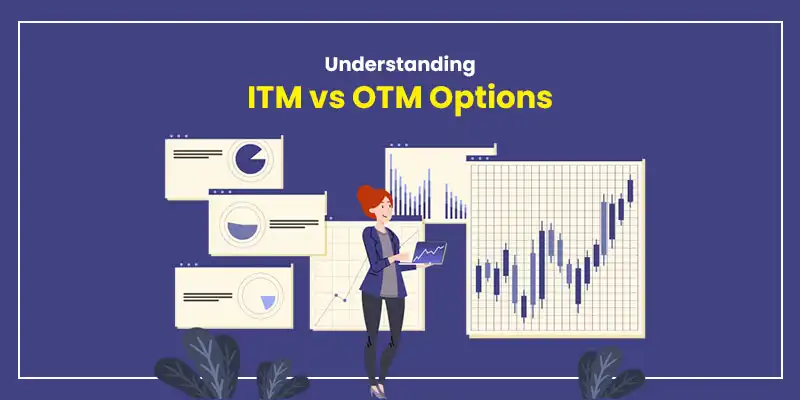Options are derivative contracts that grant the right—but not the obligation—to buy or sell an underlying asset at a predetermined price. A fundamental aspect of option valuation involves determining whether an option is in-the-money (ITM) or out-of-the-money (OTM). These classifications reflect the relationship between the option’s strike price and the current market price of the underlying asset. Understanding ITM and OTM status helps traders and investors interpret how options contracts are priced based on their moneyness. This overview is intended for informational purposes only and does not suggest or promote any specific trading strategy.
Contents
- In-The-Money Options
- Definition and Intrinsic Value
- Examples
- Moneyness Spectrum
- Behavioral Characteristics
- Out-Of-The-Money Options
- Definition and Zero Intrinsic Value
- Examples
- Moneyness Spectrum
- Behavioral Characteristics
- Time Value and Extrinsic Value
- Practical Implications for Market Participants
- Conclusion
- Frequently Asked Questions
In-The-Money Options
An option is ITM; when exercising it immediately, it would deliver a positive cash flow based on current market prices.
Definition and Intrinsic Value
- Call Option: ITM if the underlying market price (S) exceeds the strike price (K). Intrinsic value = S – K.
- Put Option: ITM if K exceeds S. Intrinsic value = K – S.
Intrinsic value represents the immediate, guaranteed payoff upon exercise, ignoring premiums and transaction costs.
Examples
- Call Example: Strike ₹100, underlying at ₹120 → Intrinsic = ₹20. If premium is ₹25, extrinsic = ₹5.
- Put Example: Strike ₹150, underlying at ₹130 → Intrinsic = ₹20. If premium is ₹23, extrinsic = ₹3.
Moneyness Spectrum
- Deep ITM: Large intrinsic portion (e.g., strike ₹50, underlying ₹100). Delta approaches 1 for calls, –1 for puts.
- Near ITM: Small intrinsic value; sensitive to small price moves and time decay.
Behavioral Characteristics
- Price Movements: ITM options typically display higher delta values, meaning their prices tend to respond more directly to movements in the underlying asset.
- Time Decay (Theta): Since intrinsic value remains, theta decay primarily erodes the smaller extrinsic component.
- Volatility Sensitivity (Vega): Lower than NTM options; increases in implied volatility have less impact on total premium.
Risk Disclaimer: Intrinsic value excludes premiums and transaction costs; exercising may require additional capital.
Out-Of-The-Money Options
An option is OTM. When exercising, it immediately yields no positive payoff; its value is entirely extrinsic.
Definition and Zero Intrinsic Value
- Call Option: OTM if S < K. Intrinsic value = 0.
- Put Option: OTM if K < S. Intrinsic value = 0.
Examples
- Call Example: Strike ₹200, underlying at ₹180 → Intrinsic = ₹0; premium reflects expectation and time value.
- Put Example: Strike ₹120, underlying at ₹140 → Intrinsic = ₹0.
Moneyness Spectrum
- Near OTM: Strike and underlying within a small percentage; moderate time value.
- Deep OTM: Widely separated strikes; low delta and high leverage potential if the market moves sharply.
Behavioral Characteristics
- Leverage Effect: OTM options are priced lower than ITM contracts. Their percentage price movement can be more volatile, particularly near expiry, but they also carry a higher likelihood of expiring worthless.
- Time Decay (Theta): Pure extrinsic value erodes fastest, especially close to expiration.
- Volatility Sensitivity (Vega): Elevated relative to deep ITM but lower than NTM; extrinsic premium rises with volatility expectations.
Risk Disclaimer: OTM options carry the risk of total premium loss if the underlying fails to move favorably.
Time Value and Extrinsic Value
Options pricing beyond intrinsic value depends on:
- Time to Expiration: More days increase the chance of price movement; time value decays non-linearly as expiry nears.
- Implied Volatility: Implied volatility influences extrinsic value. When volatility rises, option premiums may increase, though this effect can vary depending on strike, time, and liquidity conditions.
- Interest Rates and Dividends: Minor adjustments via cost-of-carry; holding options instead of shares can slightly alter valuations.
Risk Disclaimer: Extrinsic value is eroded by theta (time decay), accelerating as expiry approaches.
Practical Implications for Market Participants
Understanding ITM and OTM status can inform position evaluation without implying recommendations:
- Premium Structure: ITM premiums reflect substantial intrinsic value; OTM premiums rely entirely on market expectations.
- Probability Considerations: ITM options have a higher theoretical probability of finishing ITM; OTM options carry a lower probability but greater return potential if the market shifts.
- Trading Costs: Writing ITM options typically demands a higher margin due to an increased chance of exercise.
- Liquidity: Strikes around the money often see the highest trading volumes and tightest spreads; deep ITM/OTM may trade less frequently, widening spreads.
Conclusion
ITM and OTM classifications provide a structural way to understand how options are priced based on strike and market levels. This classification supports understanding of contract valuation, without implying any specific use case or trading approach.
Disclaimer: Investment in the securities market is subject to market risks. Please read all scheme-related documents carefully before investing. The information provided in this article is for educational and informational purposes only and is not intended as investment advice. Trading in derivatives, including options, involves substantial risk and is not suitable for all investors. Past performance is not indicative of future results. Readers are advised to consult with their financial advisors before making any trading decisions.
FAQs
An at-the-money option has its strike price equal (or very close) to the underlying asset’s current market price, yielding zero intrinsic value.
Higher implied volatility raises extrinsic value across all strikes, but OTM options typically see a proportionally larger premium increase due to leveraged payoff potential.
OTM options may have value before expiry if the underlying asset’s market price moves significantly beyond the strike price, surpassing the premium paid. However, such scenarios are subject to market conditions.

